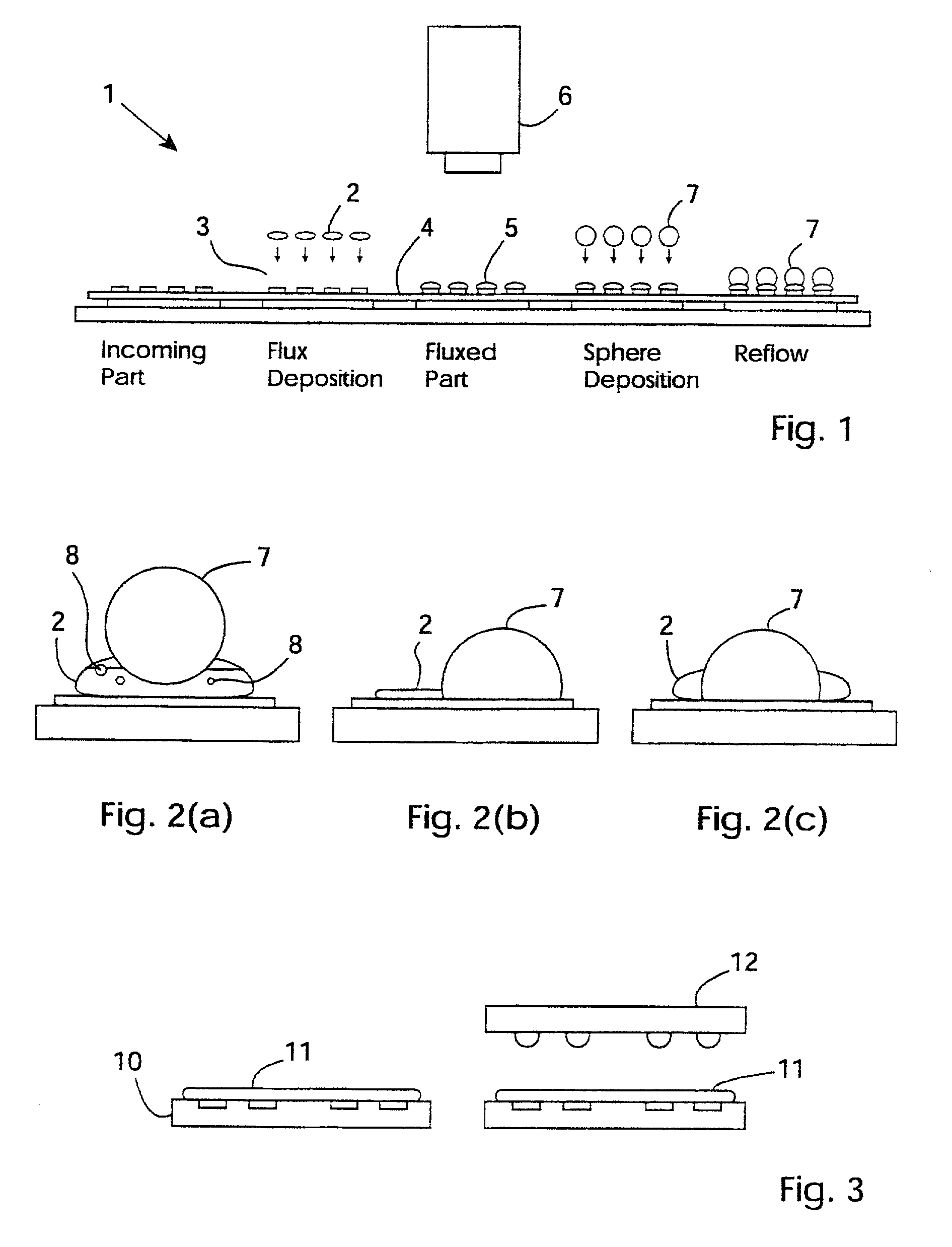Material inspection
a technology of material inspection and inspection, applied in the direction of instruments, soldering apparatus, fluorescence/phosphorescence, etc., can solve the problems of joint reliability reduction, joint stringency, affecting joint high frequency signal propagation, etc., and achieve the effect of avoiding downstream processing defects
- Summary
- Abstract
- Description
- Claims
- Application Information
AI Technical Summary
Benefits of technology
Problems solved by technology
Method used
Image
Examples
Embodiment Construction
[0064] Referring to FIG. 1 a chip scale packaging (CSP) ball grid array (BGA) process 1 is described. Solder flux 2 is deposited onto conductive pads 3 on a substrate 4. Fluxed conductive pads 5 are inspected by an inspection station 6. This inspection provides detailed in-line information about the manner in which the flux 2 had been deposited. This information provides a strong indication of the likely quality of the downstream processing steps. Balls 7 of solder are then applied onto the fluxed conductive pads 5. Upon reflow, the balls 7 are soldered to the fluxed pads 5.
[0065] Referring to FIG. 2(a) excess flux 2 results in poor contact between the solder ball 7 and the pad 4 (copper, Ni / Au or other conductor). This results in poor bonding strength and poor electrical conductivity, with a likelihood of short to medium term failure. In addition, the presence of voids 8 can affect the quality of the ball attachment. As shown in FIG. 2(b), insufficient flux 2 can result in the ball...
PUM
| Property | Measurement | Unit |
|---|---|---|
| Time | aaaaa | aaaaa |
| Angle | aaaaa | aaaaa |
| Angle | aaaaa | aaaaa |
Abstract
Description
Claims
Application Information
 Login to View More
Login to View More - R&D
- Intellectual Property
- Life Sciences
- Materials
- Tech Scout
- Unparalleled Data Quality
- Higher Quality Content
- 60% Fewer Hallucinations
Browse by: Latest US Patents, China's latest patents, Technical Efficacy Thesaurus, Application Domain, Technology Topic, Popular Technical Reports.
© 2025 PatSnap. All rights reserved.Legal|Privacy policy|Modern Slavery Act Transparency Statement|Sitemap|About US| Contact US: help@patsnap.com



